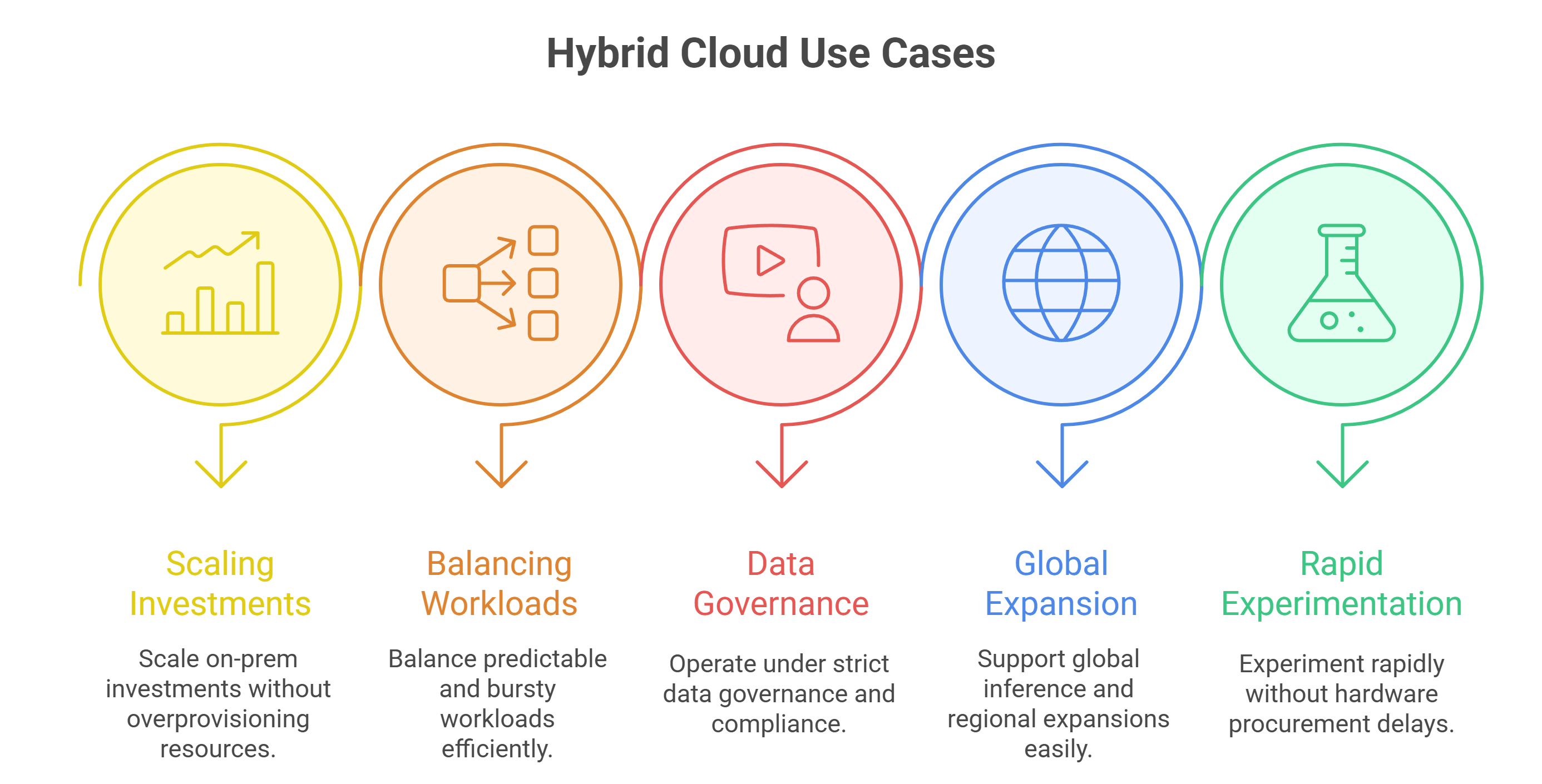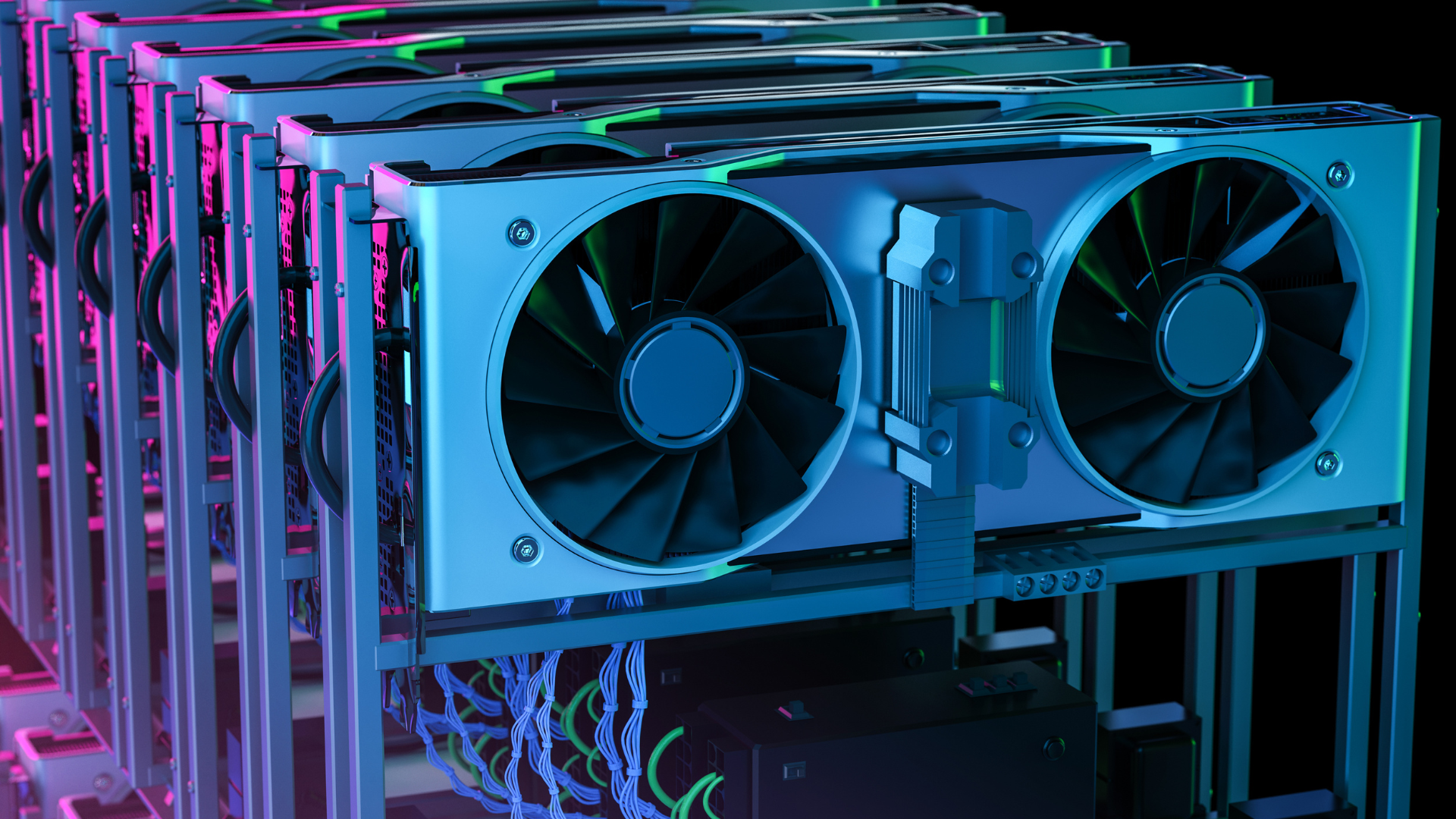For organizations scaling AI initiatives, the decision isn’t always between on-prem or cloud. Increasingly, the most effective strategies involve both. Hybrid GPU deployments balance control, cost and agility, giving enterprises the predictability of owned infrastructure and the elasticity of cloud capacity.
As AI workloads grow more complex and dynamic, static infrastructure strategies struggle to keep up. Training and inference demands fluctuate – sometimes dramatically – and different workloads have different infrastructure needs. Hybrid deployments offer a flexible path forward, enabling teams to scale intelligently without locking themselves into one model.
Why hybrid GPU strategies are gaining traction
AI workloads are rarely steady. During experimentation, compute demands may be modest. But once models move to large-scale training or production inference, demand often spikes in short bursts. Buying enough on-prem GPUs to cover those peaks is expensive, leaving hardware idle the rest of the time.
Cloud GPUs address elasticity, letting teams scale up and down as needed. But relying solely on the cloud can be costly for continuous, predictable workloads. Hybrid strategies bridge this gap: organizations run core workloads on-prem, while offloading overflow or specialized tasks to the cloud. This approach lets teams scale without overprovisioning or compromising agility.
For companies that already own GPU infrastructure, hybrid setups are especially attractive. Instead of expanding physical capacity for temporary demand spikes, they can treat the cloud as a dynamic extension of their compute footprint.
Cost control through capacity planning
One of the clearest advantages of hybrid deployments is cost optimization. On-prem GPUs involve upfront capital expenditure but lower ongoing costs, making them ideal for stable workloads. Cloud GPUs, in contrast, require no upfront investment but carry higher per-hour costs. By combining both models, enterprises can minimize total cost of ownership while maintaining the ability to scale.
A common strategy is to size on-prem clusters for steady-state workloads and use cloud GPUs during peak periods – such as training larger models or handling seasonal traffic surges. This avoids paying for unused hardware while ensuring capacity when it’s needed most.
Hybrid models also align well with different pricing structures. Reserved cloud capacity provides cost-effective baseline bursts, while on-demand instances cover unpredictable workloads. With strong utilization tracking, this approach keeps GPU usage high and costs under control.
Performance considerations in hybrid environments
Performance depends on placing workloads where they run best. Not every job should run in the cloud – and not everything belongs on-prem. Low-latency, data-heavy workloads are often best kept local, where data already resides and transfer overhead is minimal. Cloud GPUs shine for burstable, parallel workloads like training runs, hyperparameter tuning, or scaling inference globally.
Network bandwidth and latency are critical. If data transfer between on-prem and cloud is too slow, it can erode the benefits of hybrid scaling. High-speed connectivity and well-designed data pipelines help avoid these bottlenecks and maintain performance.
Security, compliance and governance
Many enterprises keep on-prem infrastructure for control and compliance. In regulated sectors like finance or healthcare, sensitive data often cannot leave specific environments. Running these workloads on-prem ensures compliance without the complexity of external transfers.
But hybrid doesn’t mean compromising on security. Teams can segment workloads: train sensitive models locally, while offloading non-sensitive tasks – like pre-training on public data or global inference – to the cloud. Encryption, strict access controls, and auditing mechanisms protect data flowing between the two environments.
This structure allows enterprises to stay compliant while benefiting from the flexibility of cloud infrastructure.
Scaling intelligently with hybrid models
On-prem resources provide stability but can’t be expanded instantly. Cloud GPUs offer rapid, nearly limitless scaling but at a premium. Combining both gives enterprises flexibility and control. Core workloads remain stable on-prem, while auto-scaling cloud resources handle demand spikes.
This flexibility is especially valuable for global organizations or fast-growing AI teams. Cloud GPUs make it possible to onboard new projects or expand into new regions without long procurement cycles. They also allow experimentation with new architectures without buying additional hardware.
When paired with auto-scaling, hybrid environments grow or shrink in real time, ensuring teams only pay for what they need while maintaining consistent performance.
Observability, scheduling and orchestration
Running hybrid environments effectively requires unified visibility across both on-prem and cloud. Observability tools track utilization, cost and performance, giving teams the data they need to make smart decisions.
Scheduling and orchestration are equally critical. Intelligent schedulers distribute jobs based on priority, cost, latency and data location. For example, real-time inference can be routed to the nearest on-prem node, while training jobs run on cloud clusters during off-peak hours to optimize pricing.
Tools like Kubernetes make this orchestration seamless, allowing teams to manage on-prem and cloud GPU fleets through a single control plane. This eliminates operational friction and keeps deployments flexible.
When hybrid GPU deployments make sense
Hybrid isn’t the right solution for every organization. Teams with fully variable workloads may find pure cloud more efficient. Those with extremely stable demand and strict compliance may lean fully on-prem. But for many enterprises navigating the middle ground, hybrid deployments deliver the right balance of flexibility and cost efficiency.
Common use cases where hybrid excels include:
- Scaling existing on-prem investments without overprovisioning
- Balancing predictable and bursty workloads
- Operating under strict data governance requirements
- Supporting global inference or regional expansions
- Rapid experimentation without hardware delays

How GMI Cloud supports hybrid strategies
GMI Cloud is built to make hybrid GPU deployments seamless. The platform integrates with existing on-prem clusters, extending infrastructure into the cloud without complex reconfiguration. High-bandwidth connectivity, autoscaling and observability give teams full control over workload distribution.
GMI Cloud also offers both reserved and on-demand GPU capacity, so enterprises can fine-tune their cost structures. Predictable workloads can stay on-prem, while cloud bursts cover large training runs or regional inference. With built-in governance and performance tooling, hybrid deployments become easy to scale, secure and cost-efficient.
A flexible path to scalable AI infrastructure
Hybrid GPU deployments give organizations the best of both worlds: the stability of owned infrastructure and the flexibility of the cloud. By strategically splitting workloads, enterprises can maintain compliance, optimize costs, and scale rapidly without sacrificing performance.
For CTOs and ML teams, the real question isn’t whether to choose on-prem or cloud – but how to combine them effectively. With the right orchestration tools and infrastructure partner, hybrid strategies evolve from a stopgap solution into a powerful, sustainable foundation for enterprise AI.










